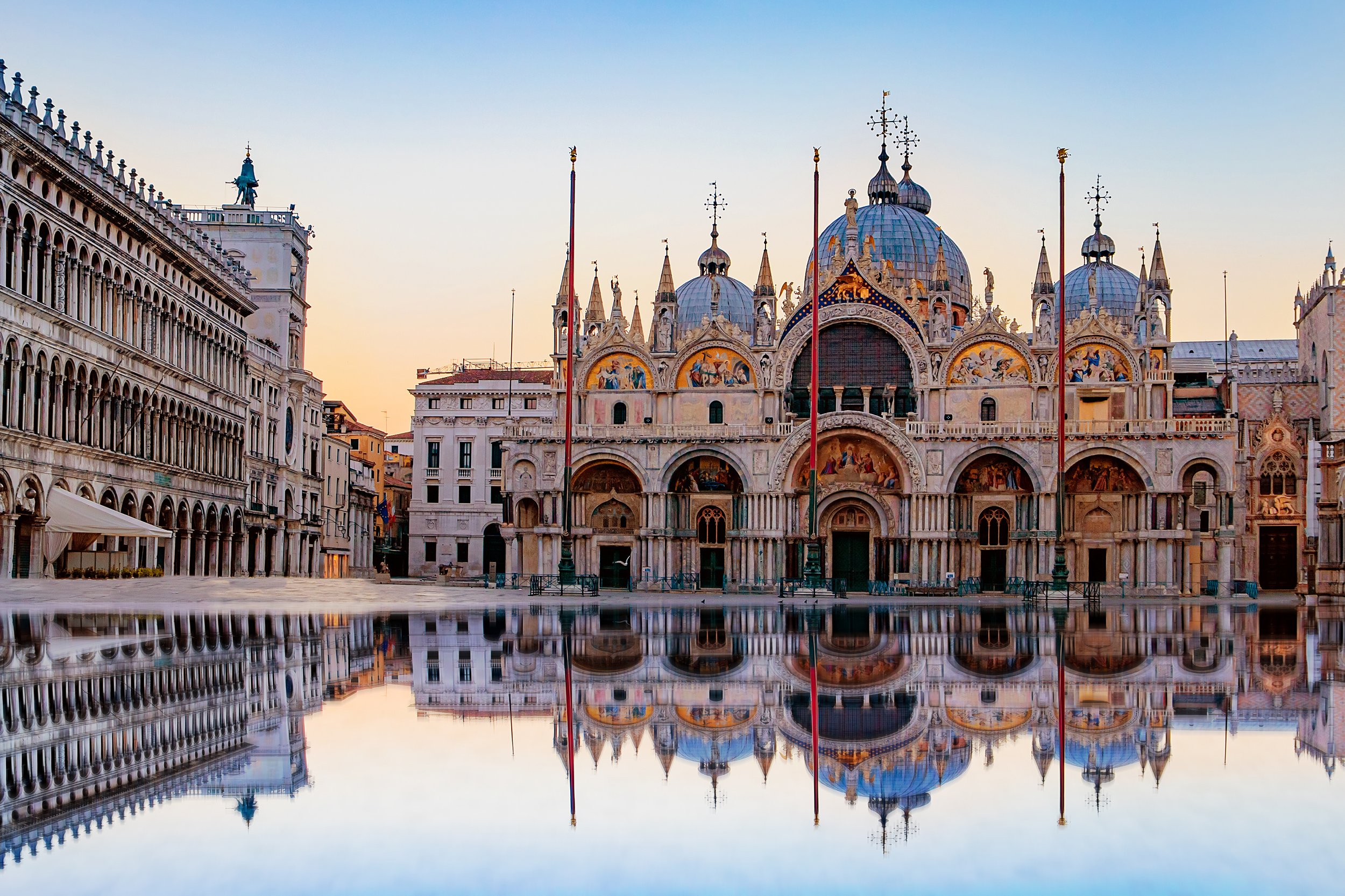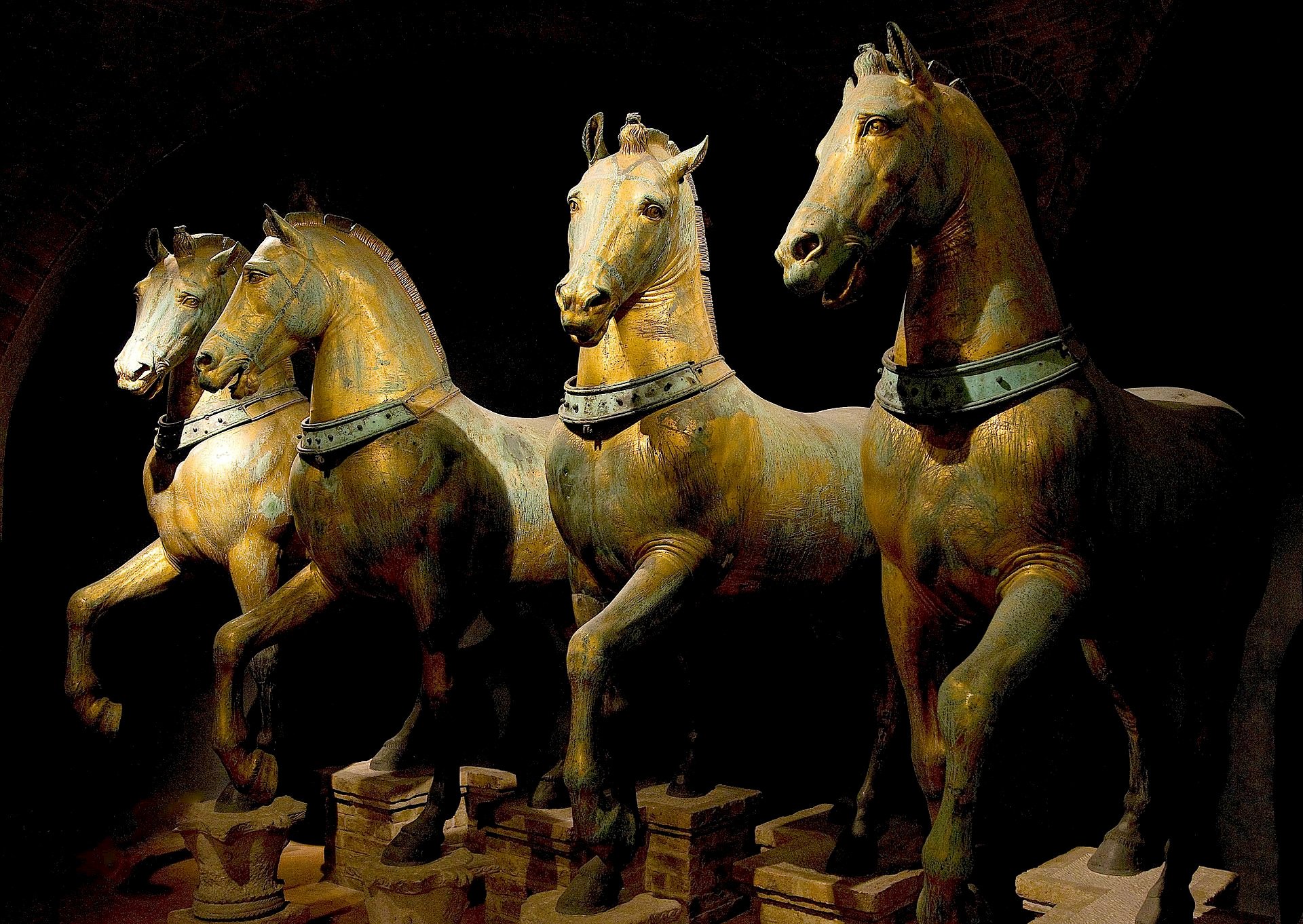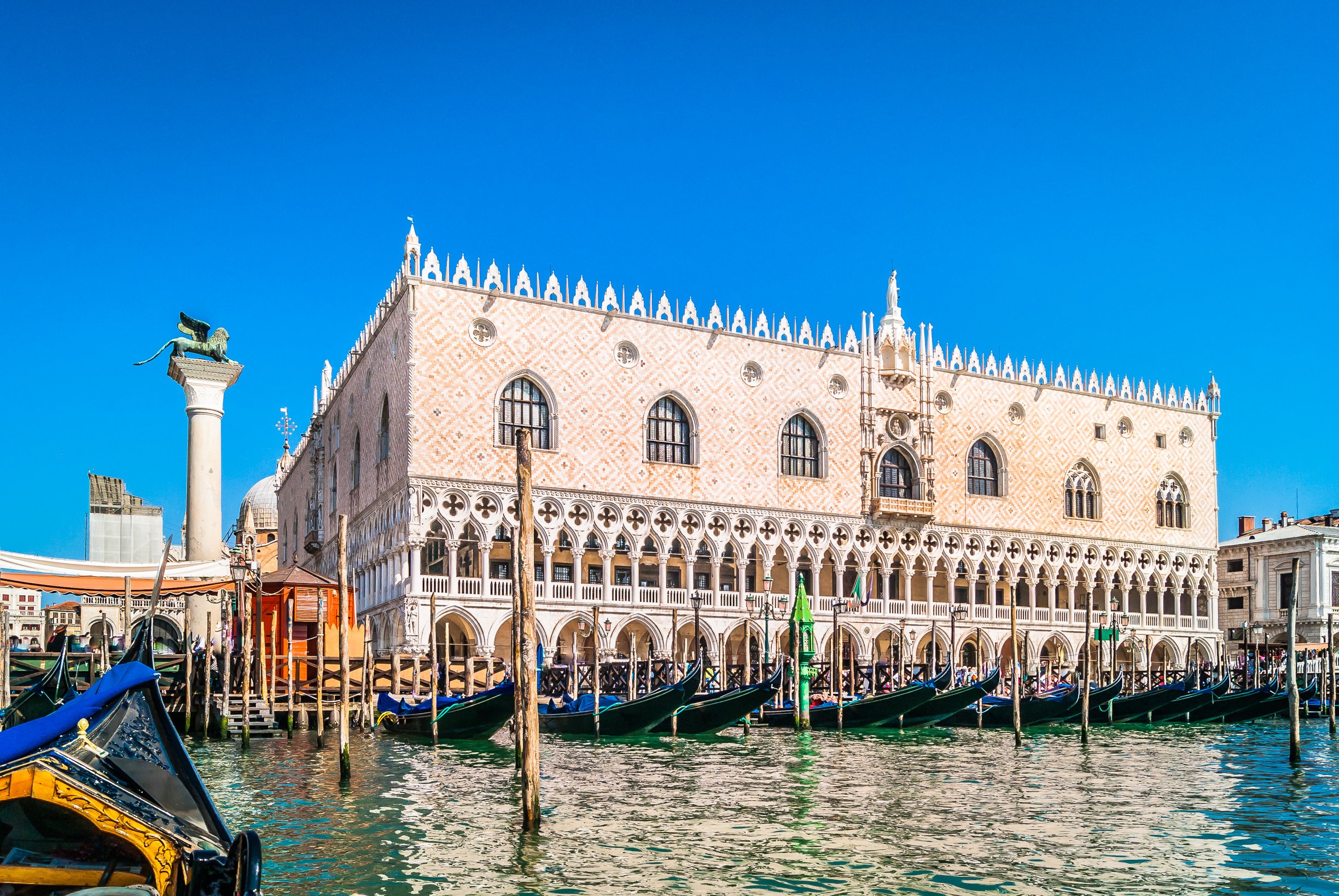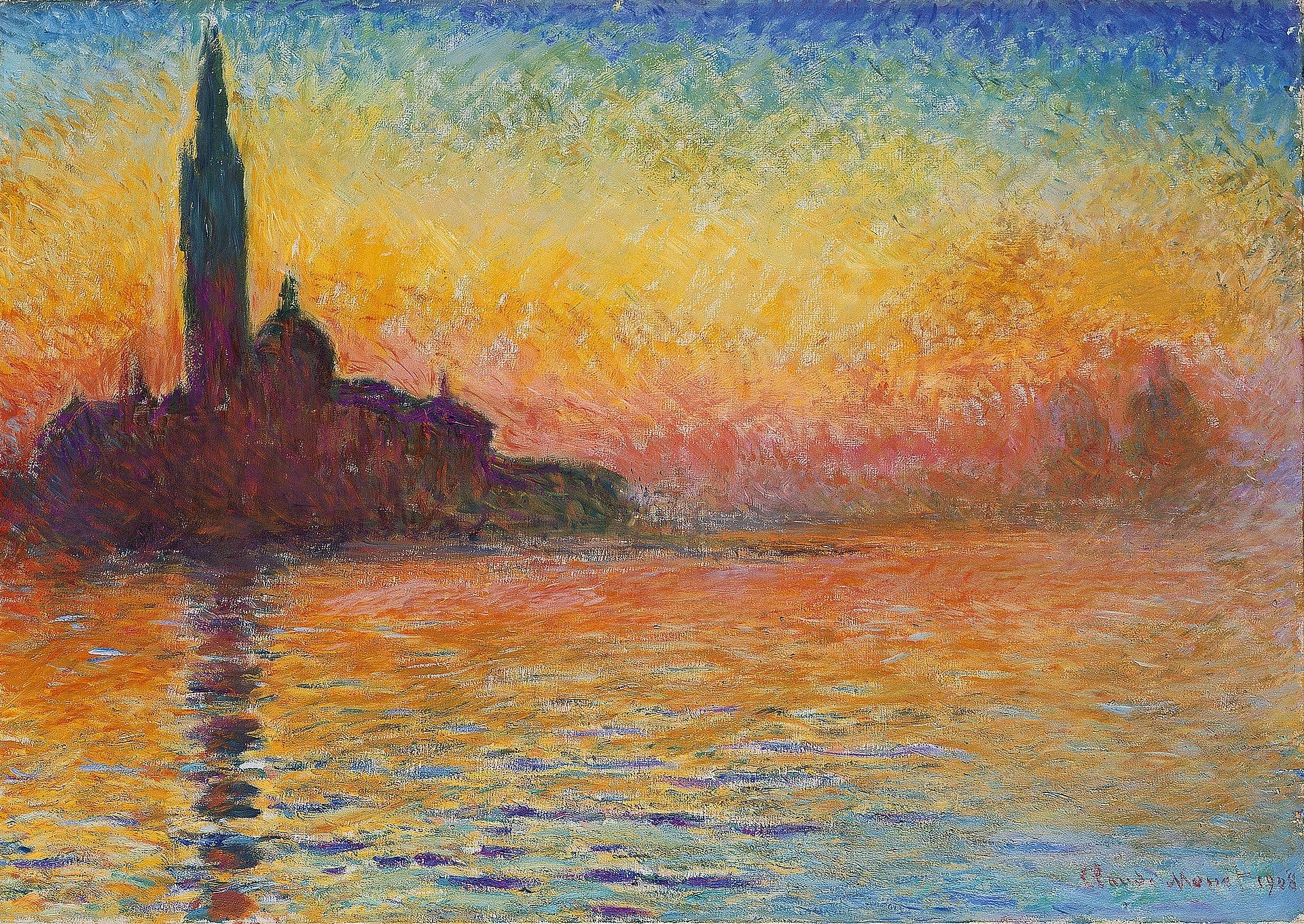Venice—3 Historical Places to Visit
Origins: After the fall of the Roman Empire
In the mid fifth century after the break up of the Western Roman empire many people from the Veneto mainland dispersed and settled into the lagoon areas (present-day Venice).
The area was under control of Byzantium (Constantinople) and still in the sphere of the Eastern Roman Empire. It remained fairly independent for the next couple of centuries. The Venice that we know today began in 811 when the government was moved to the then called Rivo Alto (present-day Rialto).
Legend says that Saint Mark the Evangelist (12-68 AD) took refuge in this same lagoon after a shipwreck.
Nearly 800 years later is where the story of our first building begins.
1. Saint Mark’s Basilica
In 832 AD two Venetian merchants took the body of Saint Mark out of a tomb in Alexandria in Egypt and back to this sacred site.
The doge (an elected Duke) commissioned a basilica to be built to house the sacred relic. The current basilica is the third church on the site and its construction began in 1063. Originally it functioned as the Doge’s private chapel and it wasn’t until 1807 that it was given the status of Cathedral of Venice.
The interior is a treasure trove of wonders acquired during the height of Venice’s conquest and the exterior is adorned with different styles representing the assimilation of different cultures.
Saint Mark’s Basilica - Adobe Stock
You’ll see eastern Byzantine influences in the domes paired with Romanesque arches in the front alongside Gothic pinnacles. At the top of the facade is a statue of Saint Mark and right below him is the winged lion an emblem of both the saint and of Venice.
Further below the statue just above the porch you’ll see the Bronze Horses.
Original horses inside Saint Mark’s Basilica - Tteske CC BY 3.0
The Bronze Horses (The Triumphal Quadriga)
Likely from Greece and made around the 4th century BC. They are a prized possession taken from the sack of Constantinople during the Fourth Crusade in 1204 and transported to Venice.
They’re made of an ancient technique known as the lost-wax method, made by pouring molten bronze into casts.
According to legend they were made in Greece during the time of Alexander the Great and in the 1st century AD taken by Emperor Nero to Rome. In the early 4th century AD Constantine transferred them to his eastern capital Constantinople (present-day Istanbul). The horses remained in Venice for almost 600 years before Napoleon’s conquest of the maritime power in 1797 when he took the horses to Paris.
The Triumphal Quadriga returned to Venice in 1815 following the defeat of Napoleon. The originals are now inside the basilica (for protection from the elements) and copies are outside.
During the crusades and in particular the Fourth Crusade after the sack and looting of Byzantium (Constantinople) Venice’s stature was strengthened.
The interior of Saint Mark’s Basilica radiates with gold glass mosaics (mostly from the 12th-14th centuries) on the walls and ceiling covering a total of 43,000 sf (4,000 sm).
St. Mark’s Basilica remains a symbol and icon of the city but it’s not the only structure from the glory days of Venice.
2. Doge’s Palace
The city of Venice was ruled by an elected doge (Duke) for more than a millennia.
This magnificent palace built for the doge and his administration in the 14th-15th centuries displays its power and the distinct facade shows the influence from the eastern world. This original style would come to be known as Venetian Gothic. Made of brick the exterior is faced with pink and white marble. The facades have open arcades with Venetian gothic pointed arches and delicately carved stonework.
The palace has apartments for the doge, government offices, a courthouse and a prison among other rooms.
Doge’s Palace - Adobe Stock
The apartments are decorated with paintings by Renaissance artists showing the triumphs of Venice. Prisoners were held under the roof of the palace or in the basement of the Pozzi (the wells). A new prison was built in 1600 next to the Palace and connected by the Bridge of Sighs.
This famous bridge was coined the Bridge of Sighs because of the prisoners’ expressions of woe.
After the end of the Venetian Republic the palace still housed government offices until 1923 when it became open to the public.
3. Church of San Giorgio Maggiore
Standing on the island of the same name this church sits opposite the icon of Saint Mark’s Basilica.
Originally the site was given to the Benedictines in 982 AD when there was already a first church on the island. The Benedictines founded a monastery here but a 13th century earthquake devastated the building. A new building was being planned by the early 16th century when architect Andrea Palladio was asked to make improvements in 1565.
San Giorgio Maggiore by Theudbald CC BY-SA 2.5
Andrea Palladio was one of the most influential architects of the Renaissance.
What is Renaissance architecture?
Originating in Florence in the 15th century, Renaissance architecture embodies a rebirth of classical styles.
Modeling after the classical ideal to harmonize between the human form and architecture. It was first developed in Florence with Filippo Brunelleschi regarded as one of the first Renaissance architects. This style spread to other Italian cities and was dominant in Italy.
Renaissance architecture also expanded to other European areas to a varying degree throughout the 15th-16th centuries.
The designs of Palladio were approved in 1566 but the church wasn’t finished until 1610, decades after his death.
Palladio used two facades to solve the problem of adapting a classical temple facade to a christian church. His brilliant solution places the two white facades superimposed over each other.
San Giorgio Maggiore at Dusk by Claude Monet (1908–1912)
Present day
The Venice Republic fell in 1797 to Napoleon and his allies and in 1866 Venice became part of unified Italy.
Today Venice remains a historic heart of culture and this city built on 118 small islands has even been named most beautiful city in the world.
Grand Canal at Night - Adobe Stock
Deep dives
For a dive into the history check out Venice: A New History by Thomas F. Madden.
And for recent history with interviews from residents after the fire of the Venice Opera take a look at The City of Falling Angels by John Berendt.







